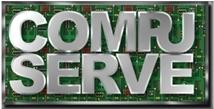is a strategy and set of technologies that help organizations capture, manage, store, preserve, and deliver content across the enterprise. It's a way to centralize and organize information, making it accessible and usable for employees, customers, and partners.
Common Use Cases of ECM:
- Document Management: Managing contracts, invoices, policies, and other important documents.
- Records Management: Ensuring compliance with legal and regulatory requirements.
- Content Marketing: Creating, managing, and distributing marketing content.
- Customer Service: Providing efficient access to customer information and support materials.
- Knowledge Management: Capturing and sharing organizational knowledge.
By implementing an ECM system, organizations can improve their efficiency, productivity, and overall business performance.

